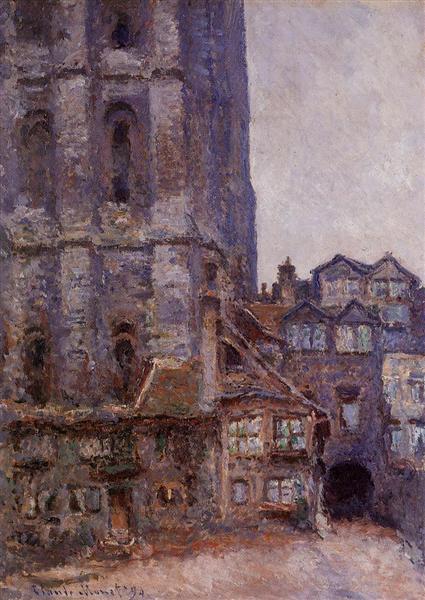Description
The work "La Cour D'Albane - Gray Time" by Claude Monet, painted in 1892, is a clear example of the artist's mastery in capturing the changing light and atmosphere of the landscape. This painting is situated in a context in which Monet had already consolidated his impressionist style, in which capturing the effects of light on nature had become his main concern.
Visually, the work is characterized by a predominantly gray color palette, which is displayed with various shades. The atmosphere is permeated with a sense of humidity, as the title "Gray Weather" suggests. This color choice not only reflects the suggested weather conditions, but also evokes a subtle and calm, almost melancholic emotion. Soft grays are intertwined with flashes of color: muted blues and subtle greens, which add depth and life to the composition.
The composition of the painting presents a landscape that runs from the lower area towards the horizon, suggesting an open space that invites contemplation. In the foreground, dark, branching trees emerge from a field and dominate the landscape, whose details become more ethereal as you move towards the background. Monet was known for his ability to depict nature in an almost abstract manner, and here one can observe how tree trunks blend into the muted tones of sky and earth. This technique manages to blur the lines between the different elements of the landscape, suggesting an intrinsic connection between the environment and nature.
Although there are no human figures present in the work, the absence of characters allows the viewer to become completely immersed in the experience of the landscape. This contemplative approach suggests an invitation to reflect on the environment and the emotions it may evoke. While Monet often included figures in his landscapes, here he chooses to leave the viewer alone with the atmosphere of the place. This highlights the importance of the natural context and environment in the work, providing an almost introspective experience.
The technique of quick and loose brushstrokes that Monet uses is clearly manifested in this piece. Each brush stroke contributes to the texture of the painting, creating a sense of movement and life on a seemingly gray and lifeless day. This interaction between light and form becomes a visual dance that gives the work its distinctive character. Monet, like his Impressionist contemporaries, moved away from detailed and precise representation in favor of a more spontaneous and emotional interpretation of landscape.
"La Cour D'Albane" is set within the context of Impressionism, a movement that revolutionized the way nature was perceived and represented. Through this work, Monet invites us to experience a moment, an atmosphere; reminds us that beauty can be found in the subtleties of the environment and that even gray weather can be a visual delight if observed closely. In this piece, Monet captures not only a moment of nature, but also an emotion that resonates through time, reminding us of the fragility and beauty of the world around us.
KUADROS ©, a famous painting on your wall.
Hand-made oil painting reproductions, with the quality of professional artists and the distinctive seal of KUADROS ©.
Playback service paintings with satisfaction guarantee. If you are not completely satisfied with your painting replica, we will refund your money 100%.

